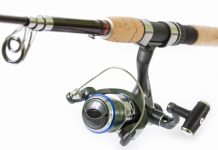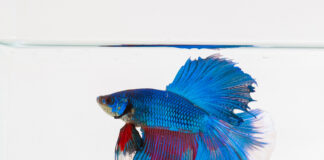Alive or dead, frozen or fresh, shrimps are excellent baits for fishing. In fact, you can catch a variety of fishes when you use this crustacean as bait. You can catch bonefish, black drum, flounder, grouper, jack fish, redfish, pompano, sea trout, snook, tarpon, and much more.
But, the question here is how to hook a shrimp like a pro? Having a poorly rigged shrimp or having this crustacean hooked in a wrong way can be such a pain in the butt. Plus, it can affect how you land and catch the fish. However, there are a lot of ways to hook a shrimp like a professional fisher. It does not matter whether you want to rig these shrimp dead or alive.
How to Hook a Shrimp Like a Pro
Using Shrimp as a Bait
How to Store Live Shrimp
How to Store Dead and Frozen Shrimp
Ways to Rig Live Shrimp
Ways to Hook Dead or Frozen Shrimp
Conclusion
How to Hook Live Shrimp
You can start hooking a shrimp through its outer covering or carapace. Although you can find many ways to use the carapace as a hook, you need to make sure the shrimp is alive.
Head Part
Hook the shrimps behind their horns if rigging through the head is your target. Just insert the hook underneath the head and the wire will go all the way up to the top.
Avoid the brain while rigging, you can spot the area easily as it is a dark spot. The shrimp will be able to move its legs and tails this way. So hooking the shrimp through the head part is better if you want it to look natural in the water.
Middle or Body Part
While hooking using the body of the shrimp, make sure to be careful of the dark spots because they are the pancreas and digestive system. So if you want to keep your bait alive, ignore that area.
Different people use different kinds of techniques, some may like to hook from the tail part towards the head or some may like the opposite way around. If you want to do bottom fishing, you can go for this technique. But the casting may not look desirable if you want to follow this way.
Tail Part
For preferably easy casting some people prefer to hook the head part first to avoid the shrimp from getting tear off in the mid-air. If you get rid of the tail fan, the shrimp will spread its scent, which will allow the big fishes to find it easily, so make sure to remove it first.
Start inserting the hook from the center towards the upper portion of the tail. If you want an aerodynamic bait then this is the best way to go for it.
Using Shrimp as a Bait

But, before we jumped into the methods applied to hook shrimp, let us discuss first how shrimp is an excellent bait. To increase your chances of catching loads of fishes when you go saltwater fishing is to use prawns as baits.
When you use shrimp, you can catch different species of fishes like sheepshead, grouper, redfish, cobia, and snapper. Also, for your kids showing an interest in fishing, you may introduce shrimp as their first bait. They will easily learn how to catch their very first saltwater fish.
But, did you know that this kind of bait is also ideal for seasoned fishers and anglers? They usually turn to shrimp when they are planning to have a big catch. Also, using shrimp as bait is the most used method when it comes to fishing in America.
How to Store Live Shrimp
To keep your live shrimp for fishing, here are the steps you must follow:
- Select Your Bucket Wisely
To keep live shrimp, you may use either a one-layered bucket or a two-layered minnow bucket. However, many experts suggest using a two-layered minnow bucket because you can quickly change the water if needed. Also, some fishers utilize a 15-gallon bucket to store their bait.
- Determine What Portion Your Bucket Can Hold

When you save live shrimps, you need to know how many shrimps your bucket can hold. Making the bucket too crowded with shrimps means that they will most likely die because of lack of oxygen. As one dies, the other shrimps will die gradually. Thus, do not overfill your bucket.
- Allow the Water to Cool Down
Before you put in the baits, you need to check the temperature of the water. If it is too warm, lower its temperature by adding ice to it. To make the water fresh and clean, you must make sure to change your water from time to time.
- Oxygenate Your Shrimp
All marine creatures need oxygen to live. Thus, shrimps need enough oxygen to breathe in the water. You can supply the bucket with oxygen by using two methods: using an aerator or utilizing an oxygen-releasing tablet. You may use both of these devices with the minnow bucket. Additionally, it will work well with shrimps.
How to Store Dead and Frozen Shrimp

To keep the freshness of your bait, you must follow these instructions:
- Preserve Your Dead Shrimp Using Small Jars
You can conserve dead shrimps in brine. Also, you can carry them in little jars just like fishers hold pork rind in their tackle box. To store them in containers, you need to obtain a pound of shrimp. Then, you have to get rid of the heads, shells, and tails.
- Place Some Salt in the Bottom Of the Container
You may also add a layer of salt onto the bottom and the top of the jar. Then, put another layer of salt on the shrimp itself. Add another piece of sliced shrimp on top of the other. Lastly, you need to repeat the process of alternating salt and shrimp layers until your container is full. The salt will make the shrimp retain its freshness to allow it to last longer on the hook.
- Keep the Shrimps Frozen
You can pack and refreeze your shrimps to use them for another fishing adventure. You may keep them frozen as long as they are not yet spoiled. Hence, you need to check their freshness regularly. You also need to separate the packages of frozen shrimp from other frozen foods. Then, put a label on the frozen baits.
Ways to Rig Live Shrimp
You can start hooking a shrimp through its outer covering or carapace. Although you can find many ways to use the carapace as a hook, you need to make sure the shrimp is alive.
Here are steps to effectively hook a live shrimp for fishing:
- Hook the Shrimp’s Head When Trolling or Casting
A lot of pro fishers start off by hooking their shrimp’s head. You can do this by manipulating either the two of these approaches. For the first way, you may try to insert the hook below the shrimp’s head. Then, thrust the barb out on the top. However, you must avoid damaging the vital organs of the bait.
For the second method, you may put on the hook atop the shrimp’s head. You have to work your way under the vital organs of the shrimp before you push it out on top of the head. However, there is a drawback in rigging a shrimp via the head. Shrimps usually fall off the hook when you utilize such method.
- Fasten the Shrimp Crosswise for Float-rigging or Drift Fishing
You may begin by poking the hook below the shell of the shrimp. But, you must prevent damaging the pancreas and stomach. These organs may appear as dark marks on the body of the shrimp. You may avoid hitting these parts because it will cause your bait to panic. You do not want this to happen because it will scare away the fishes.
Next, you have to hook the shrimp under its head and use a thread to fasten the crustacean. It will allow the hook to come out in the middle of the carapace, which is a space between its critical organs. By using this method, you may cast further and get the shrimp faster. However, a downfall is that your shrimp may die faster when you use this approach.
- Rig the Shrimp Via the Tail as You Cast for Cruising Fish
Using this method will allow you to cast farther compared to hooking the shrimp via the head. With this method, however, you will propel the shrimp farther without damaging its body. What you need to do is to break off the bait’s tail. Then, use the thread to hook via the tail. Next is to push it out through the base of its tail. You need to do it far enough to cover the hook eye with the shrimp’s body.
- Put the Hook in the Shrimp’s Body

When you utilize this approach, you have to know that it is quite similar to self-weedless hooking that bass fishers do when catching plastic worms. All you need to do is to crack the crustacean’s tail. Next is to run the point entirely via the tip of the shrimp. Then, poke out the shank and start rotating the hook. It should face the bait’s base. Lastly, you need to bury the meaty section of the shrimp’s tail.
You need to make sure that you obtain a ¼ ounce of sliding sinker onto your line. Then, you have to tie it on the swivel. On the other side, you have to tie around 6 to 12 inches of leader and hook. Then, you have to bait it with the shrimp. It will make your baited hook sink to the bottom. Also, the swivel will prevent it from sliding its way to the bait. The leader will allow the bait to rise just above it.
You can also utilize this approach with a three-way swivel. Then, connect your line to an end of the pin. Your leader and bait should attach to the second end of the pivot. The ¼-ounce sinker must affix to the third tip.
Ways to Hook Dead or Frozen Shrimp
Here are some methods to rig dead or frozen crustacean:
- Tear the Body of the Shrimp Apart

Live shrimps will attract fish when they start to swim. However, dead shrimps can entice the fish because of their smell. Because of that, you have to dismember the shrimp. You may start off by smashing the feet, head, and the tail before you put the rest of its body to the hook.
- Hook from the End of the Head or the Tip of the Tail
You can also thread from the edge of the shrimp’s head or the end of the tail. Either of these two approaches is efficient. Make sure that you cover the whole shank of the hook with the shrimp.
- Sweeten the Jig Using the Dead Shrimp
Dead shrimps are perfect for the jig. You may use them with a soft plastic body or a skirt. If you are planning to tip your jig, you have to cut the crustacean with a knife into the shank length. It will make sure that the bait has the correct length. Then, you have to slice it instead of smashing it. By doing so, you will retain the firm flesh of the shrimp, and it will stay longer on the hook.
Live Shrimp Vs. Frozen Shrimp
Live Shrimp
Advantages
• Durability is more visible
• You will get more action
• Easy to rig
• The big fishes will become target easily thinking it is wounded
Disadvantages
• Need to be more careful while baiting, as you don’t want them dead beforehand
Dead/ Frozen Shrimp
Advantages
• Keeping and getting of them is easier
Disadvantages
• Target fishes can torn them easily
• There will not be any natural action because they will not try to protect them from the predators.
Pros Fishing Tips on hooking shrimp.
• Avoid the brain area while hooking a live shrimp. ( head is the dark spot below the shrimp’s horn).
• A circle hook is recommended while fishing using shrimp if you want to avoid the extra hassle of setting the hook. You can just reel in it.
• If there is a possibility of extra weeds getting stuck onto the hook depending on the place, just avoid going for an exposed circle hook.
• If you want to avoid hook, you can insert the hook again into the tail of the shrimp.
• One thing you can keep in mind is that while protecting themselves from the big fishes shrimp tend to kick backward. If you are using a living shrimp take their way of movement into accountability if you want to avoid any uncanny situation.
• You can use the hard shell to hook the shrimp through the head while putting the shrimp in the flow of current, use a popping cork or a bobber for that.
• You can insert the hook through the bottom of the shrimp’s mouth area for further casting distance and the retrieval will be easier.
• If you are using a living shrimp and want it to be durable then use the head-to-tail hooking technique. It will serve your purpose compared to the other way around.
Conclusion
A lot of pro fishers and surf anglers use shrimps as a go-to bait for different saltwater fishes. You may place them in different areas using a single or double hook rig. These crustaceans draw fishes to strike when other baits fall short.
However, you need to make sure that you rig them properly using the methods mentioned above. Doing so will make them last longer on the hook, and that only means catching more fishes. Thus, you will become more satisfied with your fishing trip!
>>> Read More:









